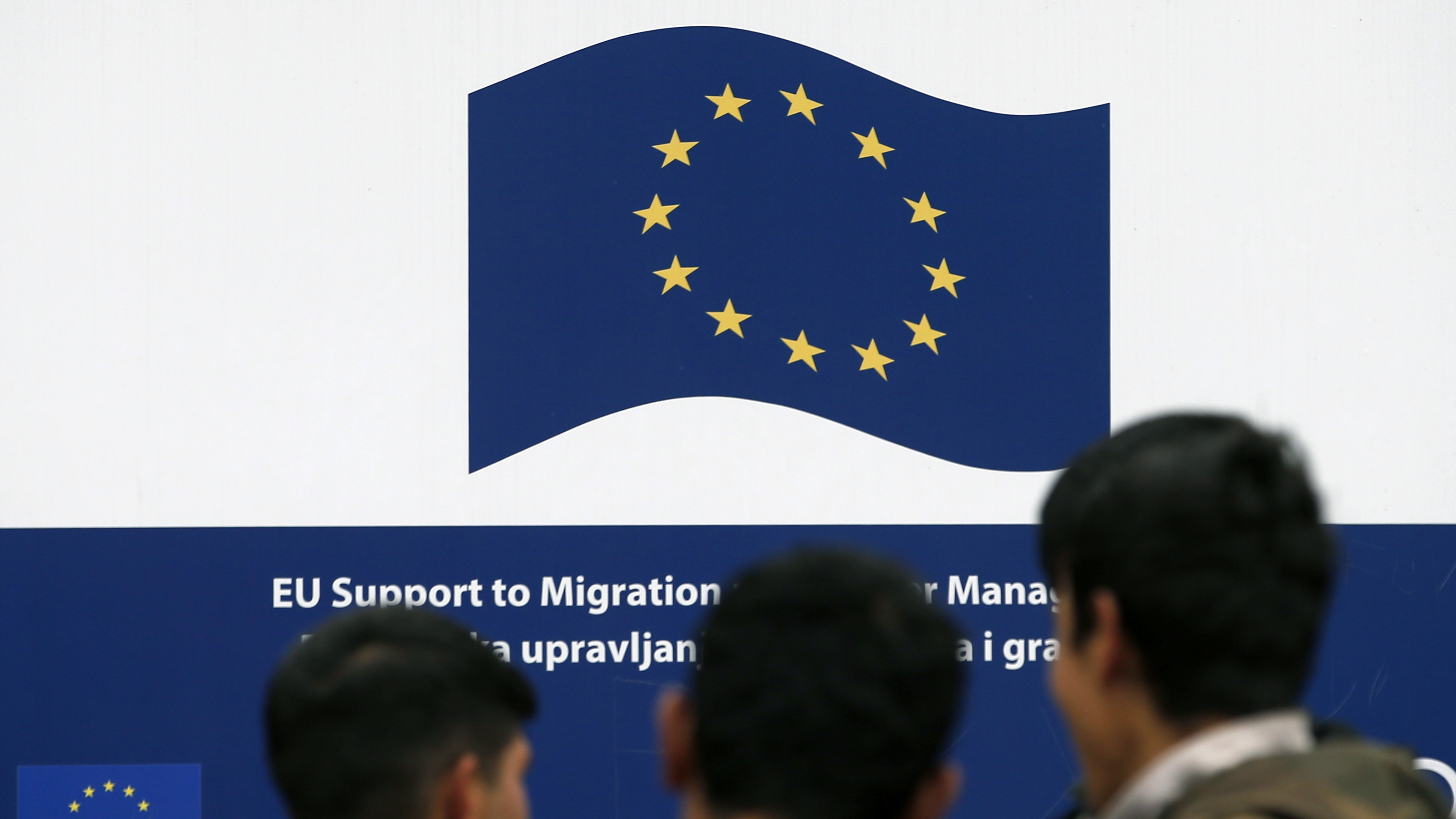Germany and the UK attract the largest numbers of 'unauthorized immigrants' according to Pew Research. CGTN Europe looks at the spread of migrants over European Union member states.

Migrants wait near a camp run by the EU in Bosnia. Credit: AP Photo/Darko Vojinovic
Migrants wait near a camp run by the EU in Bosnia. Credit: AP Photo/Darko Vojinovic
A major policy area in the UK election is immigration, specifically the number of people each party wants to permit if they win the election and form a government.
Prime ministers David Cameron and Theresa May promised to cut 'net migration' (the number of entrants to the country, with people leaving taken into account) to less than 100,000 per year.
The most recent figures show net migration was 273,000 in the year to June 2018, a figure which represents migrants with established legal status.
Recent Pew Research figures show between 800,000 and 1.2 million unauthorized migrants lived in the UK as of 2017. That's the second highest count, with 1-1.2 million unauthorized migrants living in Germany in the same year. These figures are estimates because of the difficulty in accurately counting people living in a country without authorisation.
'Unauthorised migrants' are both people who have applied for established legal status and are awaiting a decision on whether they have a right to remain as well as people who have either not applied, withdrawn applications or have been refused and have stayed anyway.
Pew says nearly a quarter of all Europe's unauthorised migrants are people awaiting a decision.
"At least 3.9 million unauthorized immigrants – and possibly as many as 4.8 million – lived in Europe in 2017. The total is up from 2014, when 3.0 million to 3.7 million unauthorized migrants lived in Europe, but is little changed from a recent peak of 4.1 million to 5.3 million in 2016", according to Phillip Connor and Jeffry S. Passel, co-authors of the latest research.
Other major nations are also reported to have large unauthorized populations, such as France and Italy. But most European nations are understood to have fewer than 100,000 people living there without the authorities' knowledge.

What about legal migration?
The UK electoral pledges focus on legal migration as a separate issue to unauthorised entry. As the Pew study sets out, this is at least in part due to the difficulty in accurately counting the numbers of those living in a nation without authorization.
However, the latest European Union figures show the nations that are popular with unauthorised migrants have a similar pattern in legally established migrants.
Germany, the UK, Italy and France - in that order - are home to the most unauthorised migrants and also have the most legal migration, with the addition of Spain.
Germany tops the scale, with almost a million incomers in 2017 (the latest figures available), followed by the UK, Spain, France, Italy and Poland.
However, Eurostat figures do not show the 'net migration' figures, but the total number of new arrivals of any background. This includes citizens of the nation itself, returning after time abroad.
124,000 people moving to Germany in 2017 were in fact Germans, for example. That means only 792,720 of the 917,109 "immigrants" to Germany were "foreign".
But Eurostat does allow separation of migration by EU citizens and non-EU immigration.

This reveals how different nations' migration figures represent very different situations. Although Germany has the highest incoming migrant figures of any EU nation, this number is split almost evenly between EU and non-EU migrants (around 390,000 each).
In Italy on the other hand, the balance is far from even. Of 343,440 registered newcomers in 2017, only 61,096 were EU citizens, compared to 239,953 who were not. One reason for this is likely to be the on-going migration crisis which has disproportionately affected southern European nations such as Italy and Greece (figures do not always equal 100 percent as those whose nationality is unknown are not included).
As well as the top receiving nations, Eurostat figures show the European nations which attract the fewest migrants.
These countries are Eastern European, but the nationalities of those entering the countries are not so uniform.
Slovakia has the lowest immigration figure, with only 7,188 newcomers in 2017. Over 2,000 of these were from other EU nations and only 579 were confirmed as migrants from outside the Bloc.
But the second lowest figure in terms of inward migration belongs to Latvia, with 9,916. Unlike Slovakia, 4,368 of these migrants originated from outside of the EU, and only 748 came from another member state.
Both Latvia and Slovakia's immigration figures are dominated by returning citizens, with more than 4,000 citizens moving home to both countries in 2017.